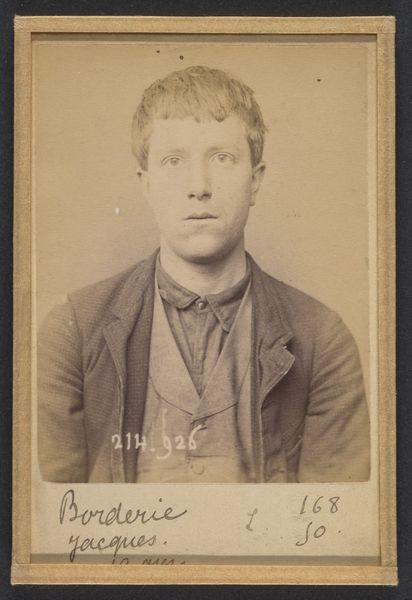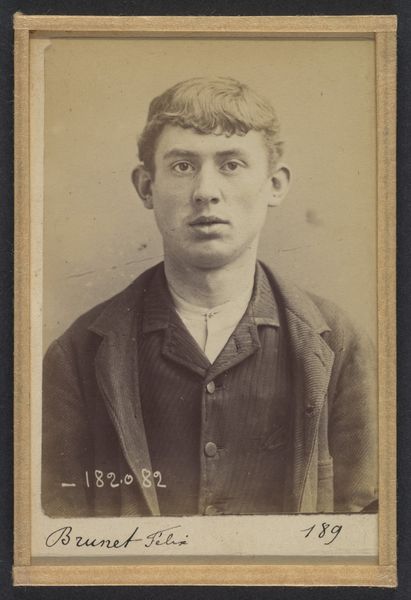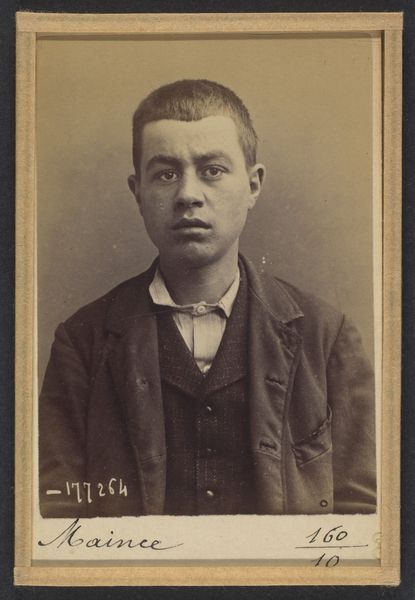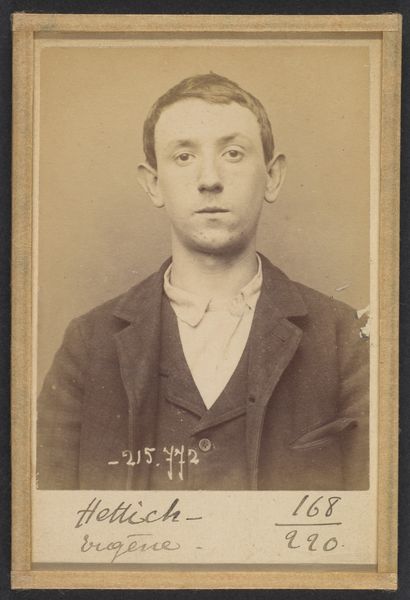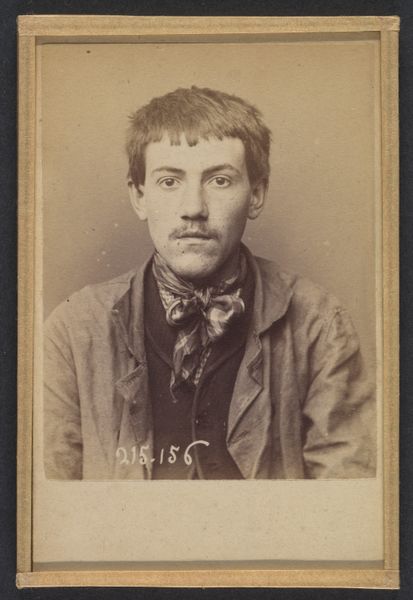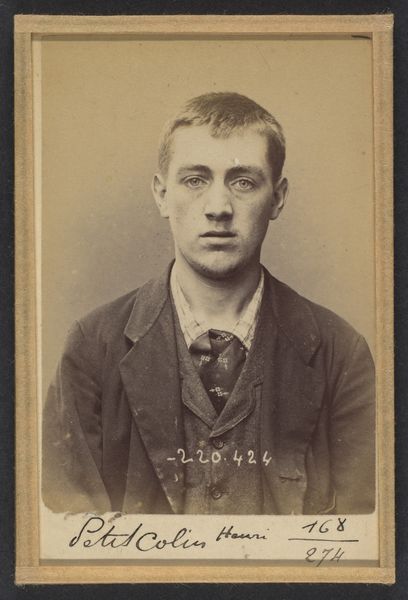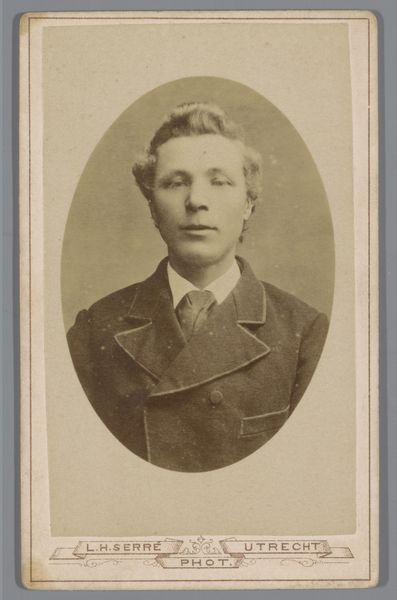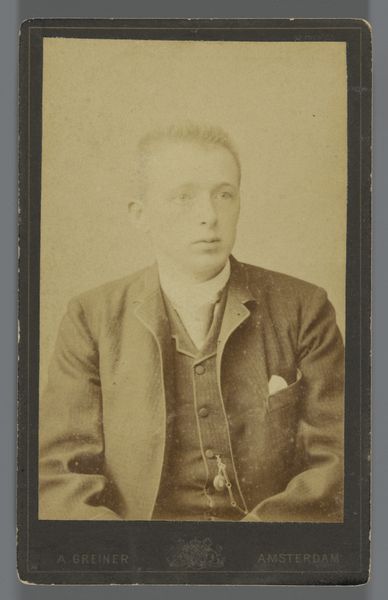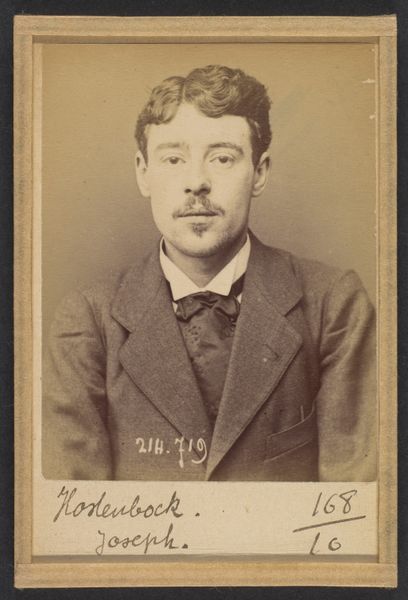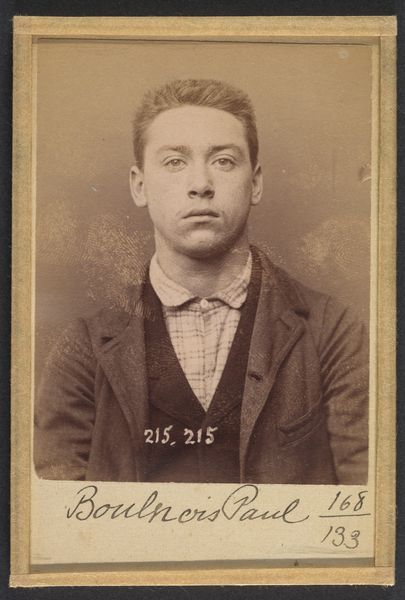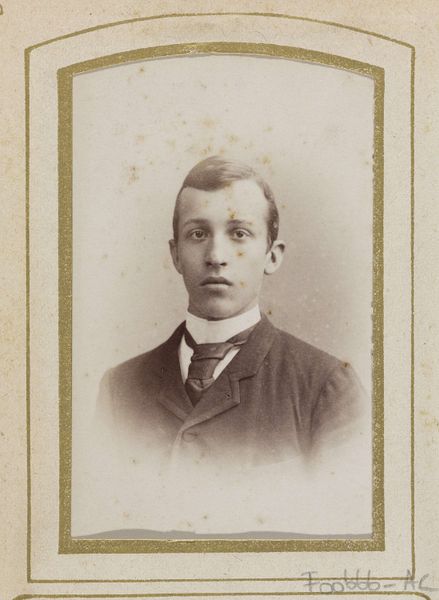
Galau. Charles. 18 ans, né à Nogent s/Marne (Seine). Charron. Cris séditieux. Anarchiste. 21/2/91. 1891
0:00
0:00
photography, gelatin-silver-print
#
portrait
#
portrait
#
photography
#
historical photography
#
gelatin-silver-print
#
history-painting
Dimensions: 10.5 x 7 x 0.5 cm (4 1/8 x 2 3/4 x 3/16 in.) each
Copyright: Public Domain
Curator: Alphonse Bertillon's gelatin silver print, dating from 1891, presents us with a stark, direct image of a young man. Editor: Immediately, the sepia tones create a strong sense of the past, and the symmetrical composition focuses our attention directly on his face. Curator: Absolutely. What we're seeing is more than just a portrait. It’s a carefully constructed tool of the state, a photograph taken as part of Bertillon's system of criminal identification. The inscription beneath the image, reading "Galau. Charles. 18 ans… Anarchiste", firmly locates this image within a specific social and political context. This individual isn't simply being represented; he's being categorized and surveilled. Editor: True, and there’s an almost unsettling clarity. The texture of his jacket, the slight asymmetry of his expression—they’re rendered with an almost clinical precision. I find myself trying to extract meaning, some trace of the 'anarchiste' described, from this calculated arrangement of light and shadow. Curator: The choice of medium is itself a crucial aspect of the artwork. The gelatin silver print, known for its fine detail and tonal range, serves to further objectify this person. Considering how anarchists were perceived, their gendered, classed, and racialized depictions at the time, reveals so much. This photo, taken in that specific medium, becomes evidence. Editor: And this evidence carries a profound weight. The flat lighting leaves nowhere to hide. His gaze, direct yet perhaps slightly weary, becomes a focal point, trapping him, the sitter. The very neutrality, if you will, makes this photography forceful. Curator: Indeed. It raises difficult questions about power, visibility, and representation. Viewing this now, removed from its original, repressive context, we have the opportunity to consider our own role in how images shape and reinforce narratives around criminality and resistance. Editor: Examining the use of line and form here has led me to the conclusion that photography, even seemingly documentary photography, employs compositional strategies to shape how we are asked to perceive this individual. Curator: Seeing Bertillon's work through this lens, as more than just historical record but as a constructed image deeply entwined with political anxieties of the time, makes it so incredibly relevant.
Comments
No comments
Be the first to comment and join the conversation on the ultimate creative platform.
